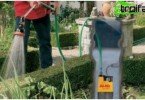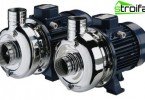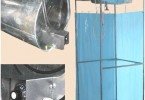Despite the abundance of fruits and vegetables in stores, summer residents are trying to grow their own food supply. And the reason is not at all cost savings or product quality. For many, work on earth has become a bit of a hobby, a physical workout that relieves stress. But the weather makes its own adjustments, and unexpected frosts can spoil the growth of crops. Therefore, summer residents are preparing for such surprises, buying street heaters. They will warm both the greenhouse and the owners.
Content
- What are street infrared heaters
- Types of IR systems
- Mobile gas heaters
- Refueling-free electrical systems
What are street infrared heaters
It would seem, what is the point of putting the heater on the street, if all the heat instantly dissipates in space, and such a volume of air cannot be heated. But the “trick” is that infrared devices do not heat the air, like traditional oil systems, but all objects and people who are in the zone of diffusion of rays. This is exactly how a bonfire affects us. Standing by an open flame, we warm up instantly, even if the temperature is below zero.
But unlike fire, which burns due to the burning of oxygen, the infrared element does not absorb anything from the atmosphere. Such devices are recommended to be placed in unheated verandas or arbors, because they do not dry the air and do not cause headaches.
Types of IR systems
There are two types of appliances: a gas street heater and an electric one. Summer residents buy both options, depending on the purpose of the application. Consider what is more profitable to use in the country.
Mobile gas heaters
If you use the device most often outside the walls of the cottage, then you should choose a street gas infrared heater. It is convenient in that it can be placed at any point on the site, since it does not depend on the energy source. All that is needed to ensure operation (gas cylinder) is installed in the device itself, or rather, at the bottom of the structure. The system turns on at the touch of a button, after which a piezoelectric element that cuts out a spark is activated. He sets fire to gas. He begins to warm up a special grid that emits infrared radiation. The rays are reflected from the reflector and create a thermal cone in a certain radius from the heater.
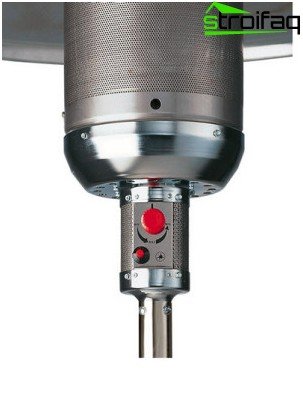
One press of a button – and the gas system automatically ignites the flame
Systems can operate on two types of liquefied gas: propane and butane. If you use the cottage only in the summer, it is more profitable to use the butane type, since at such temperatures it is more effective. In autumn and spring, with temperature differences from plus to minus, propane gives the best heating quality. If you come across a model that works on both types of gas, this will be the best option, because you can pick up fuel according to season.
But gas systems lose electric in the level of heating. In order for the device to give out a temperature of about 20 degrees, there should be at least + 10˚ on the street. Therefore, in winter such heaters are ineffective. In addition, gas installations cannot be used indoors because harmful substances form during the combustion of fuel.
Another minus is the limited time. The gas bottle has a capacity of about 30 liters. If it requires constant work, then this fuel supply is enough for only a day, but, as a rule, the heater is used for a couple of hours, so that it can last for about 8 parties.
Refueling-free electrical systems
If the summer cottage has a lot of open-type architectural structures – terraces, gazebos, verandas, etc., then infrared electric street heaters are considered more convenient to use. They are attached to the wall or ceiling in the room where the tea is planned, included in the outlet, and you can relax for at least a week. After all, in such a heater the fuel will never run out.
In terms of heat generation, electrical systems are more efficient than gas systems. At temperatures near zero, they can warm everything that is in the radius of dispersion of infrared rays to 15-20 15.
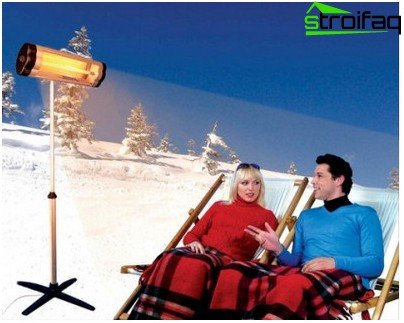
If the length of the cord allows, then with an electric heater you can easily drink coffee in the cold, sitting in chairs without outerwear
But throughout the area, outdoor electric heaters are difficult to use, since the cord length is not enough for this. The owners will have to buy an extension cord, and it stands decently, and even while you stretch the wires, while you rewind it (carefully!) It takes a lot of time. In addition, during the operation of the heater, it is necessary to monitor animals and children who may accidentally touch the wire.
The appearance of gas installations
Initially, gas-powered systems resembled traditional floor lamps — a favorite attribute of Soviet life. The top looked like a cone-shaped cap, then there was an elongated leg, and the base looked like a rounded pedestal. A gas installation was hidden in a pedestal.
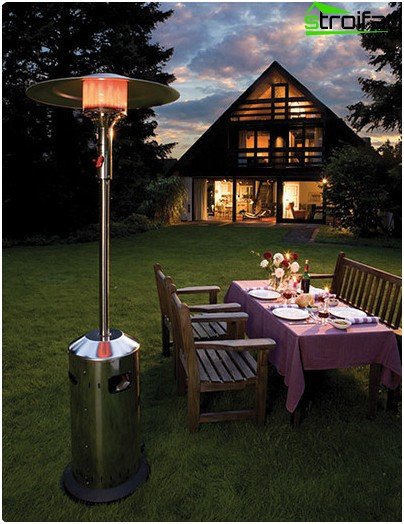
In the floor heater, the ir rays diverge in the form of a cone, expanding the radius down
Today, a more original, similar to a glass pyramid, has been added to the old form. Inside the pyramid is an elongated glass bulb, which starts near the ground and stretches to the top of the device. It is in the flask that there is a heating element that distributes infrared rays evenly, over the entire height of the installation. For comparison, in the floor lamp the heat went from top to bottom, and in this model – the column, about 1.6 m high. In order to increase the safety of use and protect children who could accidentally hook the pyramid from their burns, a protective grill is installed outside. It will not allow the glass to crack when the heater falls.
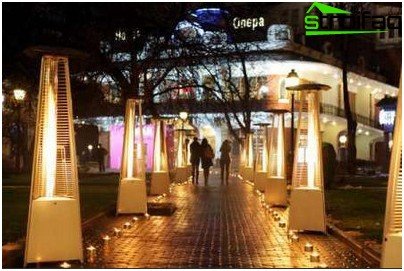
The pyramid heats the whole person evenly, while the floor lamp heats a large area below
Varieties of electric infrared devices
Electric heaters also have two varieties. The first form is in the form of a street lamp (otherwise called an “umbrella”). It is mounted on a wide stand. For outdoor use, models marked “waterproof” are available.
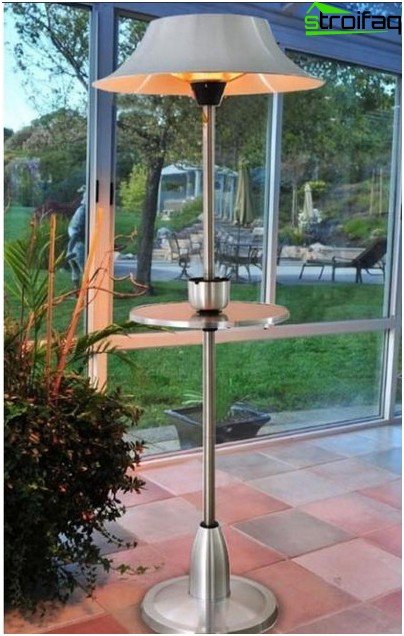
An elegant “umbrella” cannot be used outdoors if it does not have waterproof properties
In open rooms, the device is often used in the form of a panel. It resembles a rectangle in shape and is fixed to the ceiling or wall. When buying such models, it is important to correlate the power of the heater with the height at which it will be fixed. So, for high greenhouses or rooms where there will be at least 1.5 meters to a person, they buy powerful systems (over 2 kW). If the distance between the resting head and the system does not exceed a meter, then up to 800 W is enough power.
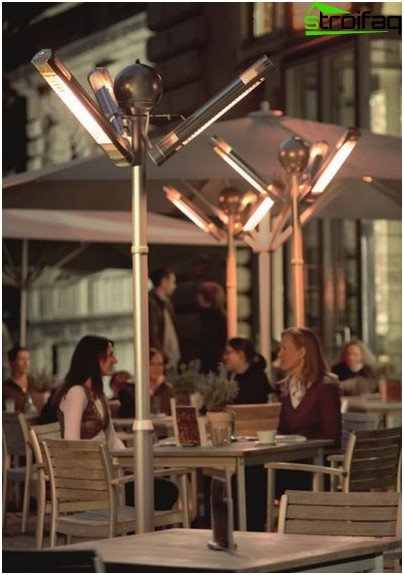
The power of the IR panel is selected taking into account the distance to the head of vacationers
Heater Tips
When choosing electric models, pay attention to the tube in which the filament is hidden. The cheapest case is quartz. It serves 3-4 years, after which it requires replacement. It is approved for use only on the streets or in very large premises. More expensive shells are metal and ceramic. Such devices can be installed both at home and outside..
When choosing a gas model, check how safe the device is. Look in the instructions if it provides for automatic gas shutdown if the heater falls or extinguishes the flame with a gust of wind.
The heating radius depends on the power of the installation. For summer residents, systems with a power of 12 kW are considered the most popular. They give a good quality of heating in a radius of six meters and at the same time consume a little fuel. In more powerful installations, gas consumption sharply increases, although the heat quality remains at about the same level as that of a medium-power installation.
For the convenience of moving around the site, it is worth buying devices on casters. Then you don’t have to drag the heater in your hands.
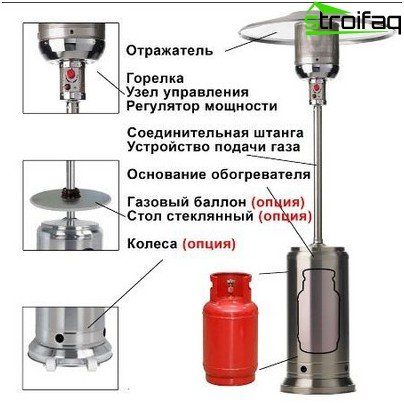
Everything that is indicated by the word “option” is not among the obligatory elements of the heater, but they improve the usability of the device
Scope of summer application of infrared systems
Tricky summer residents learned to use infrared devices even where manufacturers did not plan this. They only created an installation to increase the comfort of vacationers, so that visitors to cafeterias could sit longer in the fresh air.
But in the country there are much more areas of application of infrared heaters. Here are the most popular:
- Protection of young flowering trees from night frosts.
- Warming the greenhouse in early spring.
- Maintaining temperature balance in the room where chickens, ducklings, pigs, etc..
- Warming grapes and melons to accelerate fruit ripening (especially in cold summers).
- The fight against fungal diseases of cucumbers in the rainy summer (warming up eliminates moisture, which provokes the development of infection).
- Clearing walkways and porch from ice in winter.
- Drying wet shoes.
It is impossible to say specifically which heater for a summer resident is more profitable – electric or gas. You need to focus on where you plan to use it, how often and for what purposes.


